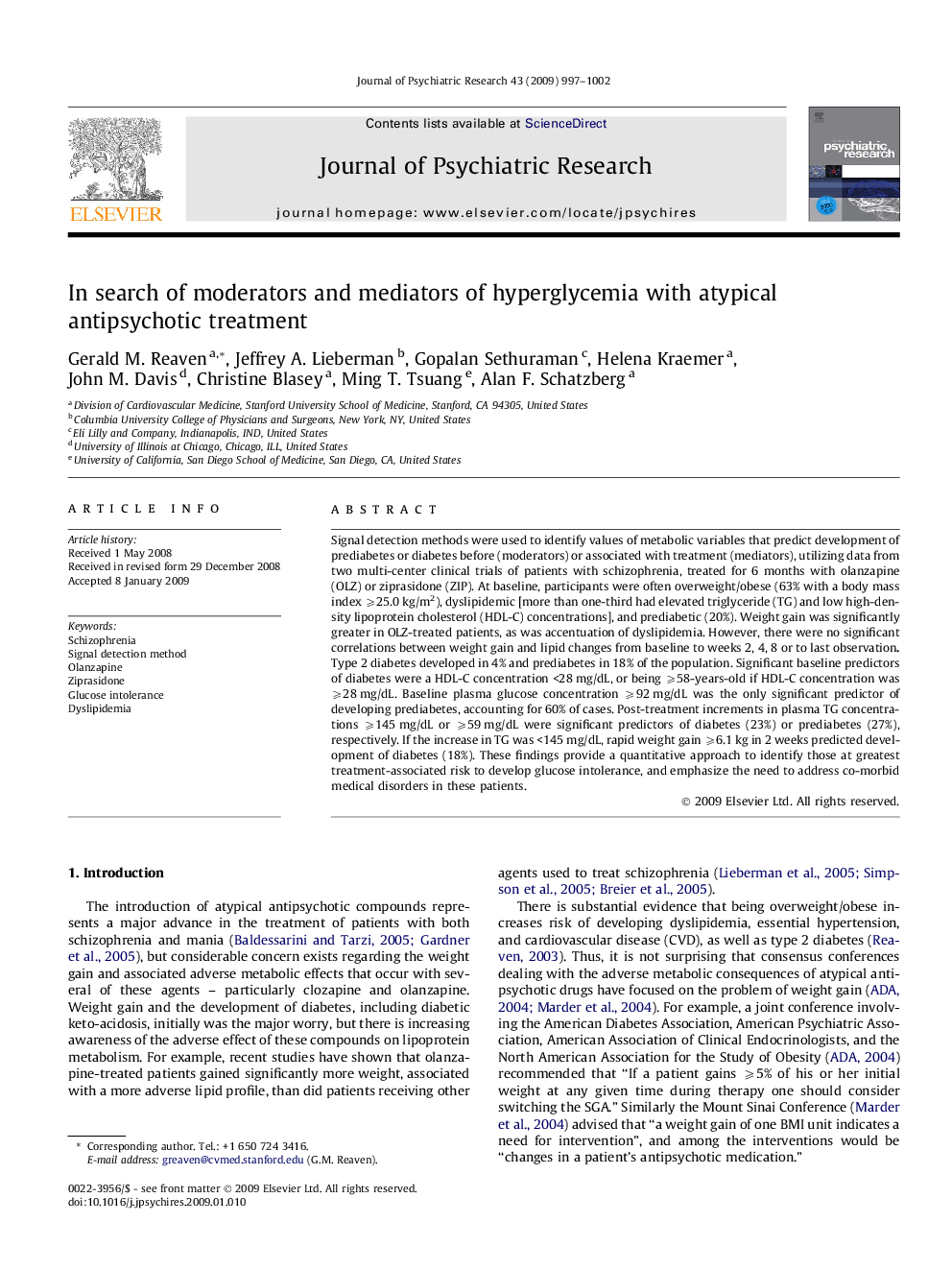| Article ID | Journal | Published Year | Pages | File Type |
|---|---|---|---|---|
| 327177 | Journal of Psychiatric Research | 2009 | 6 Pages |
Signal detection methods were used to identify values of metabolic variables that predict development of prediabetes or diabetes before (moderators) or associated with treatment (mediators), utilizing data from two multi-center clinical trials of patients with schizophrenia, treated for 6 months with olanzapine (OLZ) or ziprasidone (ZIP). At baseline, participants were often overweight/obese (63% with a body mass index ⩾25.0 kg/m2), dyslipidemic [more than one-third had elevated triglyceride (TG) and low high-density lipoprotein cholesterol (HDL-C) concentrations], and prediabetic (20%). Weight gain was significantly greater in OLZ-treated patients, as was accentuation of dyslipidemia. However, there were no significant correlations between weight gain and lipid changes from baseline to weeks 2, 4, 8 or to last observation. Type 2 diabetes developed in 4% and prediabetes in 18% of the population. Significant baseline predictors of diabetes were a HDL-C concentration <28 mg/dL, or being ⩾58-years-old if HDL-C concentration was ⩾28 mg/dL. Baseline plasma glucose concentration ⩾92 mg/dL was the only significant predictor of developing prediabetes, accounting for 60% of cases. Post-treatment increments in plasma TG concentrations ⩾145 mg/dL or ⩾59 mg/dL were significant predictors of diabetes (23%) or prediabetes (27%), respectively. If the increase in TG was <145 mg/dL, rapid weight gain ⩾6.1 kg in 2 weeks predicted development of diabetes (18%). These findings provide a quantitative approach to identify those at greatest treatment-associated risk to develop glucose intolerance, and emphasize the need to address co-morbid medical disorders in these patients.
